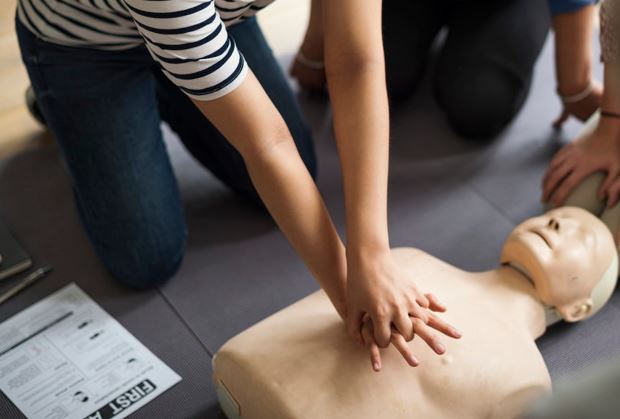
First aid expertise is paramount as it equips individuals with the knowledge and skills to offer immediate emergency assistance. Manual handling, a vital facet of first aid, pertains to the physical actions involved in moving or aiding an injured or immobile person. Receiving comprehensive training in proper manual handling techniques from a reliable source, such as FirstAidPro’s Conduct Manual Tasks Safely, is imperative.
This ensures the responder and injured party’s safety and well-being. This guide delves deeply into manual handling, its significance in the context of first aid, procedural details, and recommended practices. A thorough exploration of the relevance, importance, techniques, and optimal approaches to manual handling in first aid is the focus of this comprehensive guide.
Comprehending Manual Handling Within The Context Of First Aid
Manual handling in the context of first aid entails the careful and accurate lifting, transferring, and positioning of an injured person to prevent further harm. It encompasses a spectrum of activities, including relocating a casualty from one point to another, aiding them in assuming a sitting or lying position, and providing support to their limbs during procedures like splinting or bandaging. If you are a healthcare professional searching for a refresher course, FirstAidPro’s Manual Handling Refresher Course in Adelaide is the ideal choice.
Relevance And Significance
Preventing Additional Injury: The primary objective of manual handling within first aid is to avert the worsening of injuries. Improper lifting or moving techniques can lead to additional harm, such as sprains, strains, or fractures. By employing correct manual handling techniques, first aid providers minimise the risk of harm to themselves and the injured individual.
Immediate Care: In emergencies, proper manual handling ensures swift administration of medical care. Moving an injured individual safely and comfortably facilitates quicker and more effective treatment, potentially reducing complications and long-term damage.
Enhanced Comfort: Proper manual handling techniques contribute to the comfort of the injured person. Offering reassurance and minimising unnecessary movement can alleviate pain and anxiety while awaiting professional medical assistance.
Techniques of Manual Handling
Assessment: Before engaging in any manual handling, it is imperative to assess the situation meticulously. This includes evaluating the severity of the injury, identifying potential hazards, and devising the most suitable approach for transferring the casualty.
Effective Communication: Clear communication is pivotal. Explaining the plan to the injured party and securing their cooperation is crucial. If the injured individual is conscious and capable of cooperating, provide gradual and precise instructions.
Lifting and Moving: When lifting, bend your knees while maintaining a straight back. Utilise the strength of your legs rather than your back to lift the person. Maintain a firm grip while keeping the casualty close to your body. Avoid abrupt movements or twists that could strain your muscles or harm the casualty.
Transferring: When transferring an individual from one surface to another, confirm that the receiving area is uncluttered and stable. Slide sheets or blankets can aid in minimising friction during transfers.
Positioning: Proper positioning is vital for the comfort and safety of the injured individual. Employ pillows or rolled towels to support limbs, particularly when immobilising with splints or bandages.
Assisting Movement: In situations where the casualty needs to adjust their position, provide gradual assistance while ensuring stability before releasing your grip.
Utilising Equipment: When available, use medical aids such as stretchers, backboards, or lifting devices to facilitate safe manual handling. Always adhere to the manufacturer’s guidelines when using such equipment.
Optimal Practices for Manual Handling in First Aid
Training: Acquiring comprehensive training in manual handling techniques through certified first aid courses is crucial. These courses provide hands-on experience and guidance on implementing safe and effective methods.
Collaboration: Whenever feasible, involve additional individuals in the manual handling process. Having extra hands can make the task safer and more manageable.
Adaptability: Recognize that each situation may necessitate a unique approach to manual handling. Assess the circumstances and adjust your techniques accordingly.
Self-Preservation: Safeguard yourself by using proper body mechanics and techniques. Be mindful not to exceed your physical or mental limitations.
Documentation: After delivering first aid, document your manual handling actions for the benefit of medical professionals. This information can inform subsequent treatment decisions.
Conclusion
Manual handling is a critical first aid component in safeguarding the rescuer and the injured individual. By grasping the importance of proper manual handling techniques and incorporating them into your first aid repertoire, you become better equipped to provide efficient and secure assistance during emergencies. By imbibing knowledge, honing skills, and adhering to best practices, you have the potential to significantly impact the lives of individuals in dire need of care.
Interesting Related Article: “Essential First Aid Kits For Every Home And Car“
from Health Archives - Market Business News https://ift.tt/mYr1xq3
via IFTTT



0 Comments